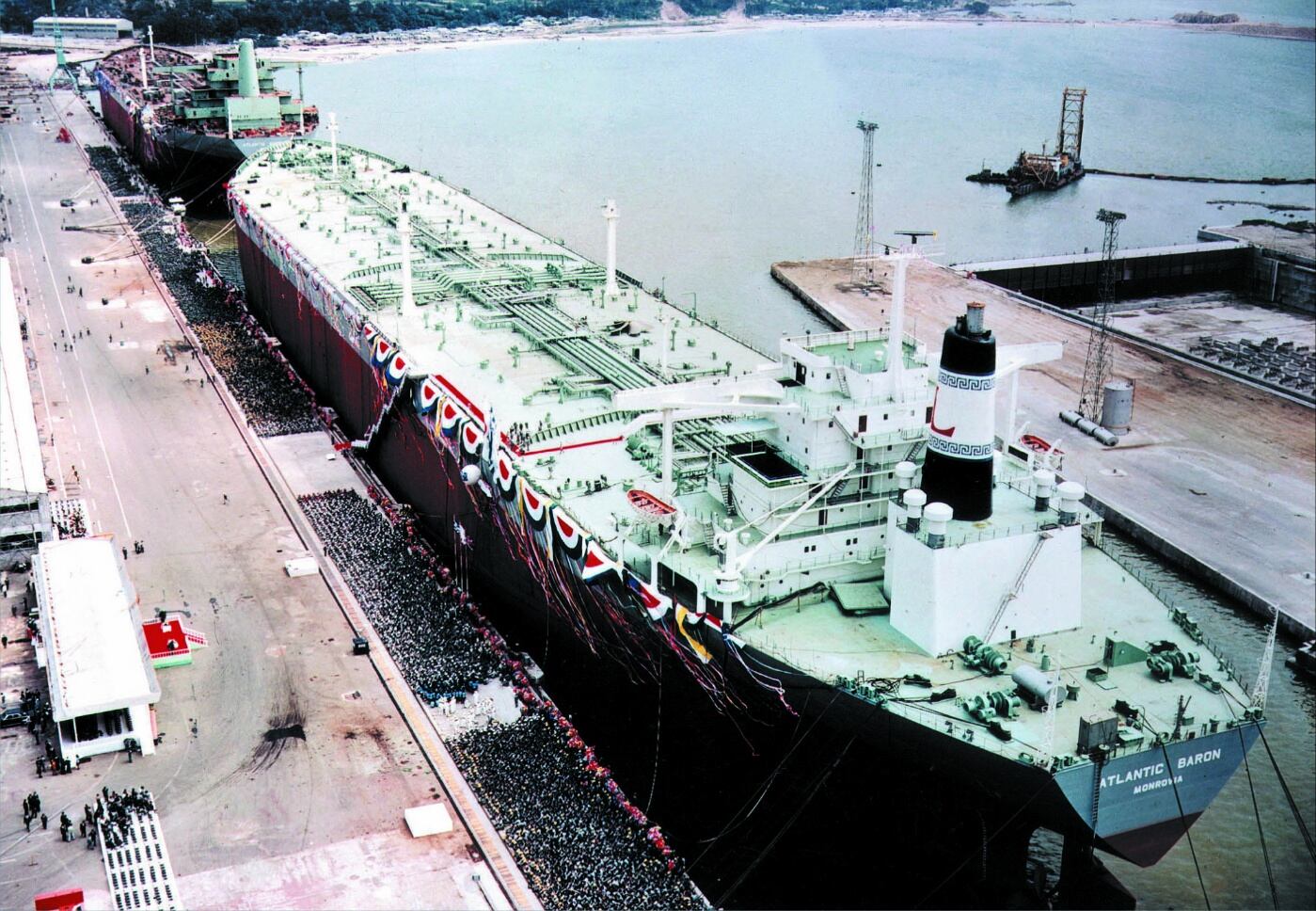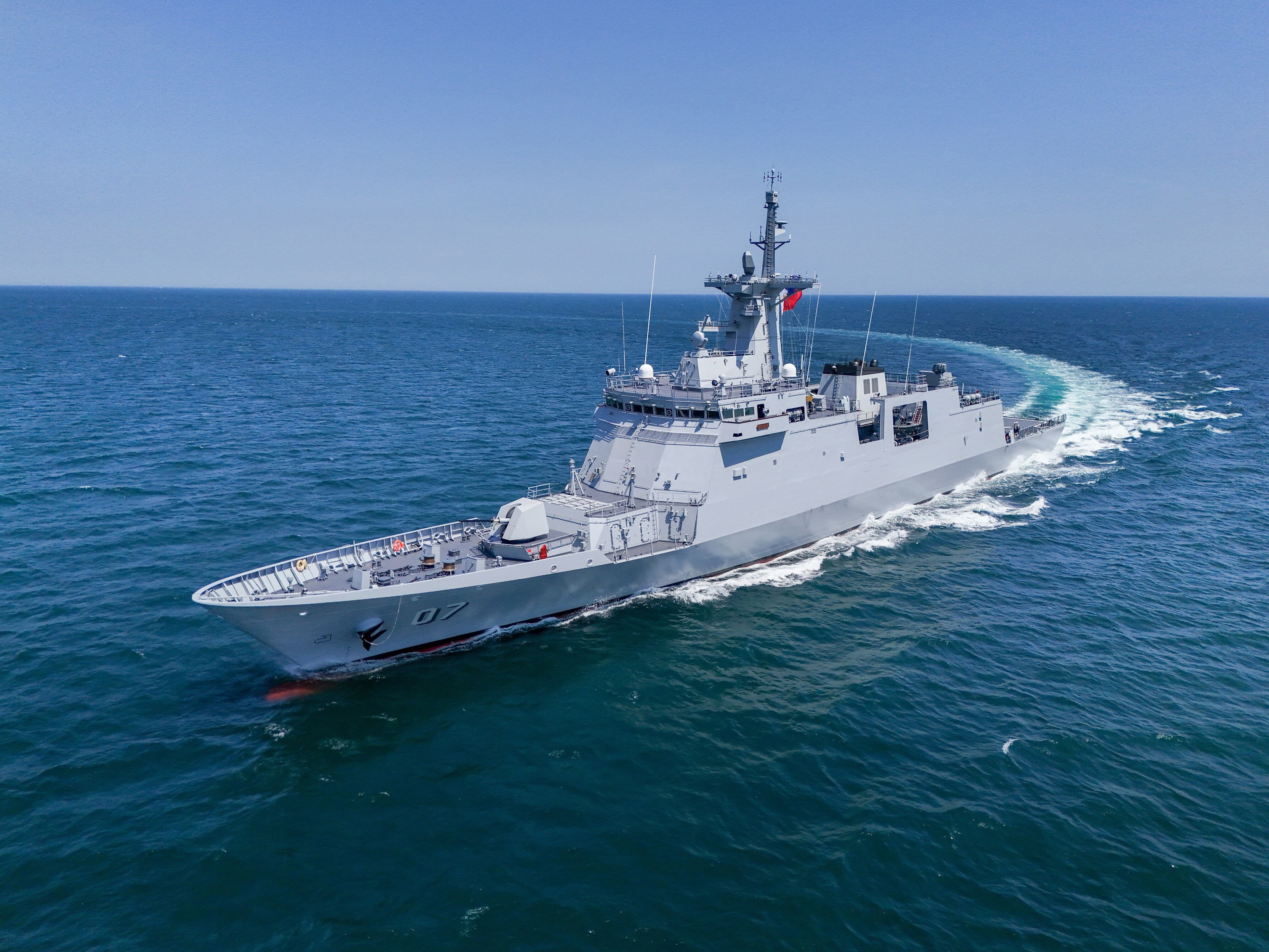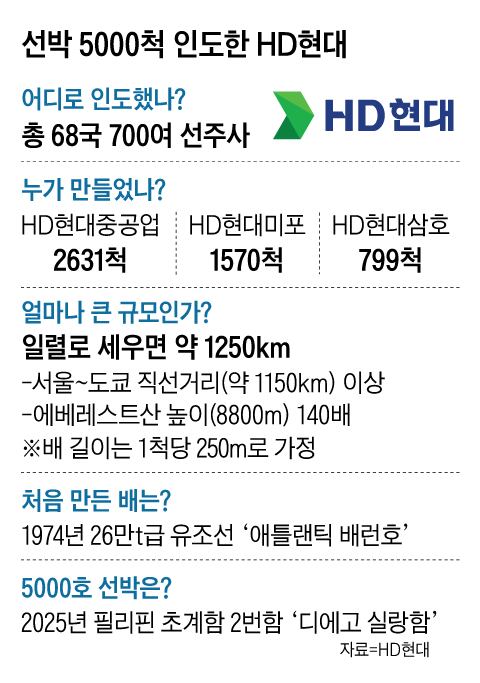In 1974, a large ship sounded its horn in Mipo Bay, Ulsan. This was the 260,000-ton *Atlantic Baron*, which the late Founder Chung Ju-yung o...
In 1974, a large ship sounded its horn in Mipo Bay, Ulsan. This was the 260,000-ton *Atlantic Baron*, which the late Founder Chung Ju-yung of Hyundai Group obtained orders for by traveling around the world with a 500-won bill that showed a turtle ship and a picture of a white sand beach where a shipyard would be constructed. Exactly 51 years later, HD Hyundai made history by becoming the first company in the global shipbuilding industry to deliver 5,000 vessels.


The 5,000th ship was the *Diego Silang*, the Philippine Navy's second patrol vessel. Measuring 118 meters long, it is a cutting-edge warship. HD Hyundai Heavy Industries provided a framed photo of the ship captured by a drone, while officials from the Philippine Navy boarded the vessel to prepare it for its deployment zone.
HD Hyundai celebrated the delivery of its 5,000th ship at its HD Hyundai Heavy Industries facility in Ulsan on the 19th, stating, “We have reached a historic achievement by delivering a total of 5,000 vessels, a first for any single company in the history of global shipbuilding.” This accomplishment outperforms Europe and Japan, which have long-standing traditions in shipbuilding, and represents a significant milestone that Chinese state-owned shipyards, which have rapidly expanded their production since the 2000s, have not yet achieved. Since the delivery of its first vessel, the *Atlantic Baron*, HD Hyundai has provided ships to more than 700 shipowners across 68 countries over the past 50 years. HD Hyundai Heavy Industries has delivered 2,631 vessels, HD Hyundai Mipo 1,570, and HD Hyundai Samho 799.
◇Miracle Started with a Single 500-Won Bill
With an average ship length of 250 meters, arranging all 5,000 ships would result in a total length of 1,250 kilometers—more than the direct distance between Seoul and Tokyo, which is roughly 1,150 kilometers.
In 1972, when Hyundai Group's chairman, Chung Ju-yung, aimed to construct a shipyard in Mipo Bay, Ulsan, Japan commented, "Considering South Korea's economic size, the capability to build 50,000-ton ships is adequate," and claimed, "Even if a shipyard is established, South Korea lacks the technology to produce large vessels." Nevertheless, in June 1974, the shipyard was finished along with the delivery of the first vessel—a milestone that had never been achieved in the history of global shipbuilding. At the ceremony, then-President Park Chung-hee and his wife were present and remarked, "Today's naming event signifies the advancement of heavy and chemical industries and represents our nation's rising national strength."

◇From Merchant Vessels to Combat Ships: From Imitator to Innovator
South Korea, previously known as a "fast follower" concentrating on commercial vessels such as tankers and bulk carriers, has now positioned itself as a "first mover" at the forefront of the market. This milestone aligns with the full implementation of the Korea-U.S. shipbuilding collaboration project MASGA. The significance is highlighted by the fact that the 5,000th vessel is an advanced warship, rather than a commercial one. The Korean shipbuilding sector, spearheaded by HD Hyundai, seeks to become a global leader in maritime defense by managing not only U.S. Navy vessel MRO (maintenance, repair, and overhaul) but also expanding into new construction. The extensive experience and timely delivery performance gained from constructing 5,000 vessels demonstrate "world-class construction capabilities."
Nevertheless, rivalry with China still presents a significant challenge. Utilizing government financial support, China is swiftly entering the global ship market, using cost-effectiveness as its main strategy. HD Hyundai is getting ready for the upcoming "super cycle" by concentrating on high-value, complex ships and advancing environmentally friendly and self-navigating technologies. On this occasion, Chairman Chung Ki-sun remarked, "HD Hyundai will keep sailing toward a safer and more sustainable ocean, pioneering future marine innovation with AI, carbon-free fuels, and autonomous navigation technologies," and added, "We will actively progress toward the next 5,000 vessels and another fifty years."



